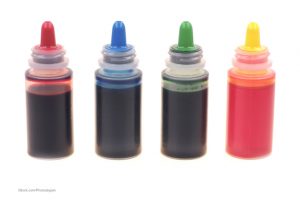Environmental Working Group has published its first-ever “dirty dozen” guide to food additives. That organization has a “dirty dozen” list of produce that contains large amounts of pesticides and herbicides. This list is for label readers; it tells you which additives to avoid.
 Nitrates and nitrates are first on the list; they are chemicals used in cured meats to make the product pink and add flavor. Nitrites have been linked to stomach cancer and may be associated with brain and thyroid cancers. Scientists at the World Health Organization have declared that these chemicals are probable human carcinogens.
Nitrates and nitrates are first on the list; they are chemicals used in cured meats to make the product pink and add flavor. Nitrites have been linked to stomach cancer and may be associated with brain and thyroid cancers. Scientists at the World Health Organization have declared that these chemicals are probable human carcinogens.
Potassium bromate is next on the list. This chemical strengthens wheat doughs and help them rise during baking. It is listed as a known carcinogen by the state of California. It is also toxic to your kidneys and cause damage to your DNA.
Have you ever heard of propyl paraben? This endocrine-disrupting chemical is actually on the GRAS (generally regarded as safe) list. The compound is a weak synthetic estrogen that can accelerate the growth of breast cancer cells. It’s used as a preservatives in bakery products and food dyes.
Next up are butylated hydroxytoluene (BHT) and butylated hydroxyanisole (BHA). Both are on the GRAS list and are used as preservatives. But there is evidence that BHA causes tumors in animals, and rats fed BHT have developed lung and liver tumors. Especially try to avoid foods that contain both.
Propyl gallate is used as a preservative in products that contain fats. It is also classified as GRAS, even though there studies have shown an association with this chemical and tumor development in rats. It may also be an endocrine disruptor.
Theobromine is another GRAS list “dirty dozen” additive. FDA scientists have questioned the GRAS destination because the actual human consumption level is five times higher than the level reported as “safe” by the company. The company also did not explain why the reproductive and developmental effects seen in animals exposed to this chemical were not a concern. Since the food additive industry can simply designate a compound as GRAS without having to provide proof of its safety, this additive’s place on the list exposes a huge loophole in the GRAS list.
The term “natural flavor” may sound innocuous, but it’s not. “Natural flavors” can include BHA, BHT, propylene glycol, and MSG, among other additives. The overall term “flavors”, including “artificial flavors”, can cover many ingredients so the manufacturer doesn’t have to include them on labels.
Artificial colors is another label term to watch. These colors can be contaminated with compounds such as 4-methylimidazole (4-MEI), which causes tumors. There is also debate about the effects of synthetic FD&C colors on children’s behavior.
Diacetyl has been in the news associated with microwave popcorn. This chemical is used as butter flavoring in microwave popcorn and is associated with a severe respiratory condition found in people who work in microwave popcorn factories. The compound causes bronchiolitis obliterans, which leads to inflammation and permanent scarring of the lungs. It is also used to flavor dairy products such as yogurt and cheese and is used in butterscotch and maple flavorings.
Phosphate food additives are number 10 on the list. They are used to improve moisture retention in meats and to leaven baked goods. Higher phosphorus levels in the blood are linked to increased heart disease risk. And anyone with kidney disease facts a higher rate of death if they have high phosphate levels in their blood.
Finally, number twelve is aluminum additives. They are used as stabilizers in many foods, but animals exposed to aluminum in the womb have neurological effects such as changes in motor response, learning, and behavior. Aluminum can accumulate and persist in the body. While some have proposed a link between aluminum and Alzheimer’s disease, that association is unclear.
Get into the habit of reading food labels and watch out for these chemicals. Avoid them when you can to help protect your health.




